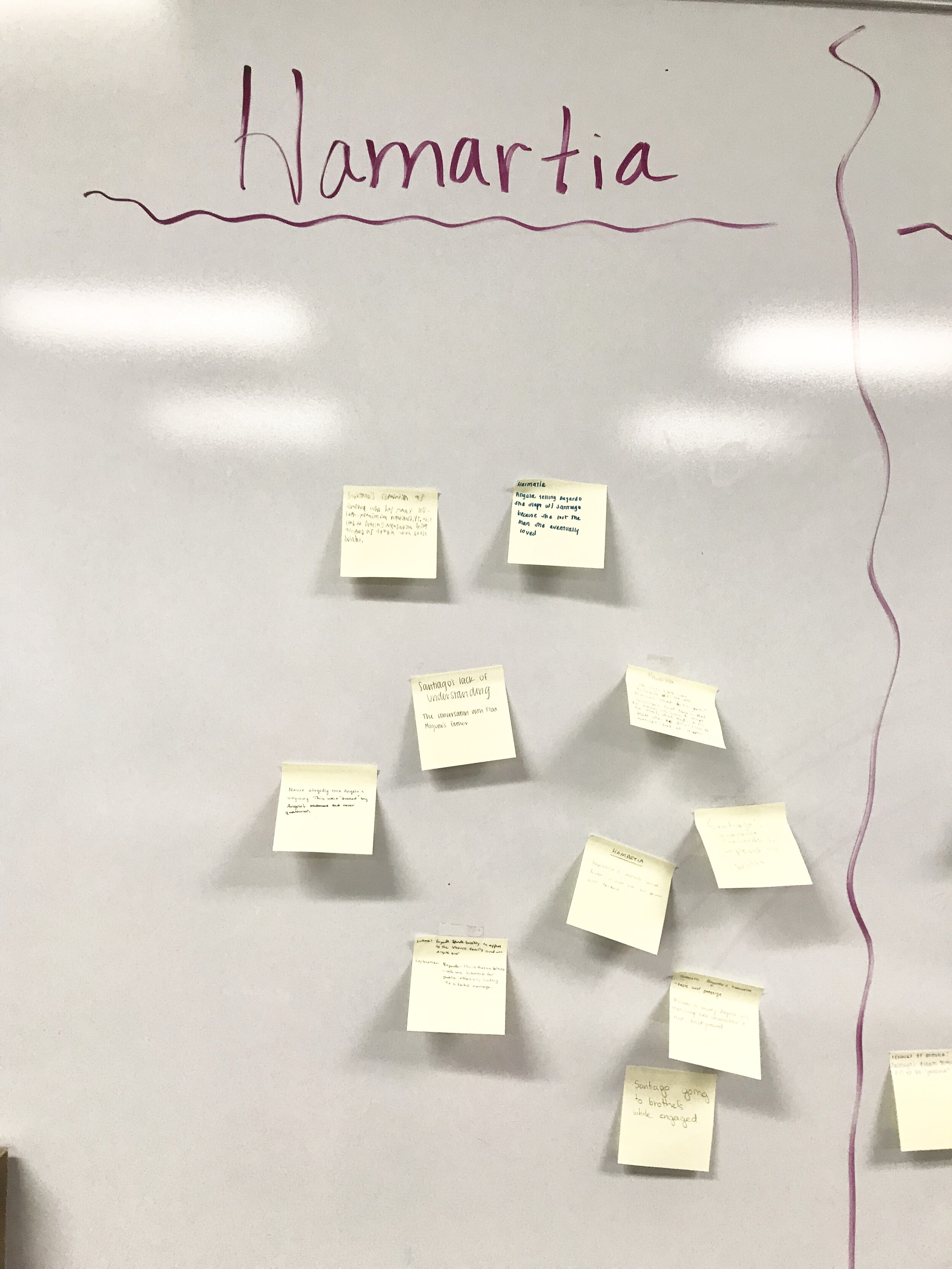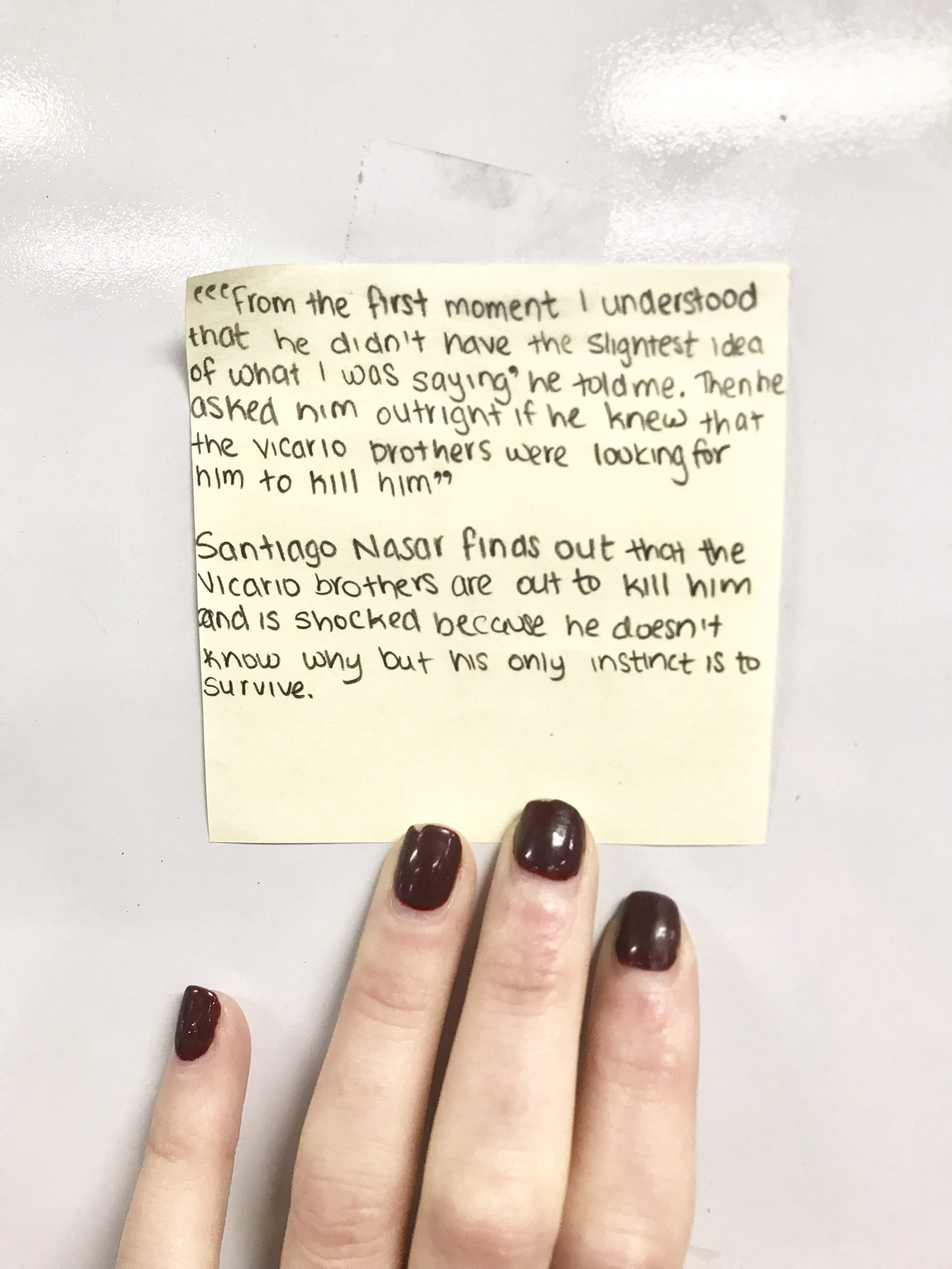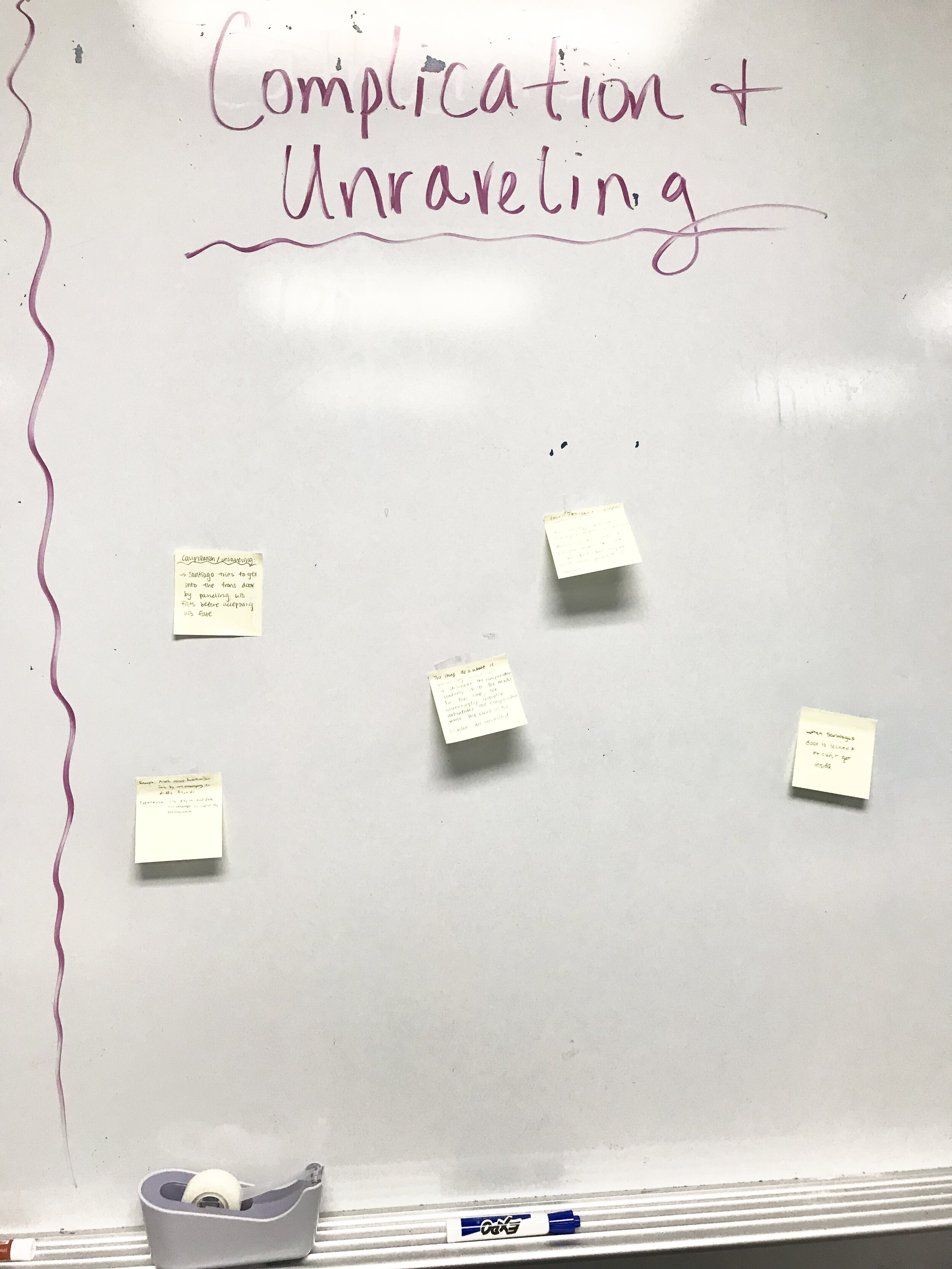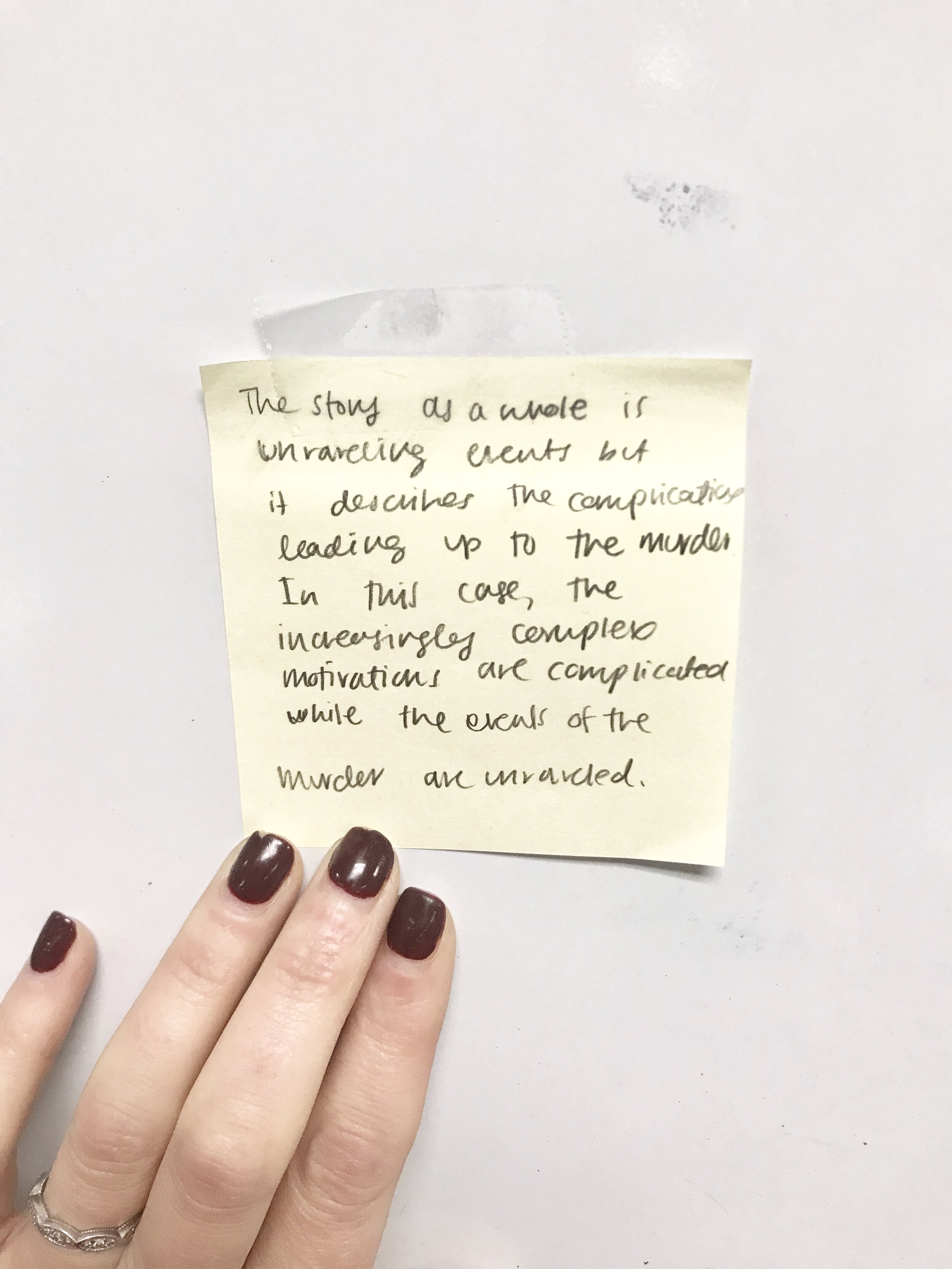Collaborative activities do not have to be fancy or involved to be effective. Oftentimes, we have limited access to supplies, which can complicate class activities. But this activity requires only a board (dry-erase or chalk— if you still teach at Hogwarts ;) , sticky notes, and writing utensils.
Because this collaborative activity is so simple, it has become my go-to strategy throughout the school year to reinforce various skills and units. It’s an excellent tool to use for test-prep (see this post) and to scaffold reading, writing, and speaking skills.
Here’s how it works!
The Procedure
Divide the board into columns with specific topics. These topics can include anything from chapters to stanzas to terms to themes to questions and more! Create topics based on your current unit of study.
Divide students into groups and give sticky notes to each group.
Then, have students write examples of the topics on the board and add them to the board in the appropriate columns.
Share! You can either select a few from the board to share, have each group share an item they added to the board, or have students “gallery-walk” the board to read what’s been added.
Discuss! Have a discussion about the topics on the board and allow students to comment and ask questions.
That’s it!
Reflection
Recently, my students read excerpts from Aristotle’s Poetics, and I put some of his terms on the board. I had groups write textual evidence as examples of these terms in action. When they were finished, I read their examples out loud and quickly realized that they were confused between two of the terms: hamartia and anagnorisis. So, I began moving sticky notes around as we talked about each example, and by the end of class, they had a clearer understanding of the relationship between these terms.
As different class periods add to the board, the display becomes more thorough, enriched, and valuable as a collaborative tool because students can collaborate among classes. I leave the display up on the board for the next day or two, and classes can come in and look at what has been added. I recently left the display up as students wrote a practice essay over Garcia’s novella Chronicle of a Death Foretold. I required students use Aristotle’s terms in their analysis of the text, and I allowed them to get up and read the board for help. And they used it! It quickly became a tool with myriad uses and purposes to support my students across class periods.
Straightforward and simple! Can’t beat that!
What are your go-to collaborative strategies? Share in the comments! We’d love to hear from you!
About the Author
Meredith is the founder and creator of TeachWriting.org and Bespoke ELA. She has taught high school English for 10+ years in Dallas, Chicago, and New York City and holds a M.A. in Literature from Northwestern University. She has always had a connection to the written word-- through songwriting, screenplay writing, and essay writing-- and she enjoys the process of teaching students how to express their ideas. Meredith enjoys life with her husband, daughter, and sweet pups.









